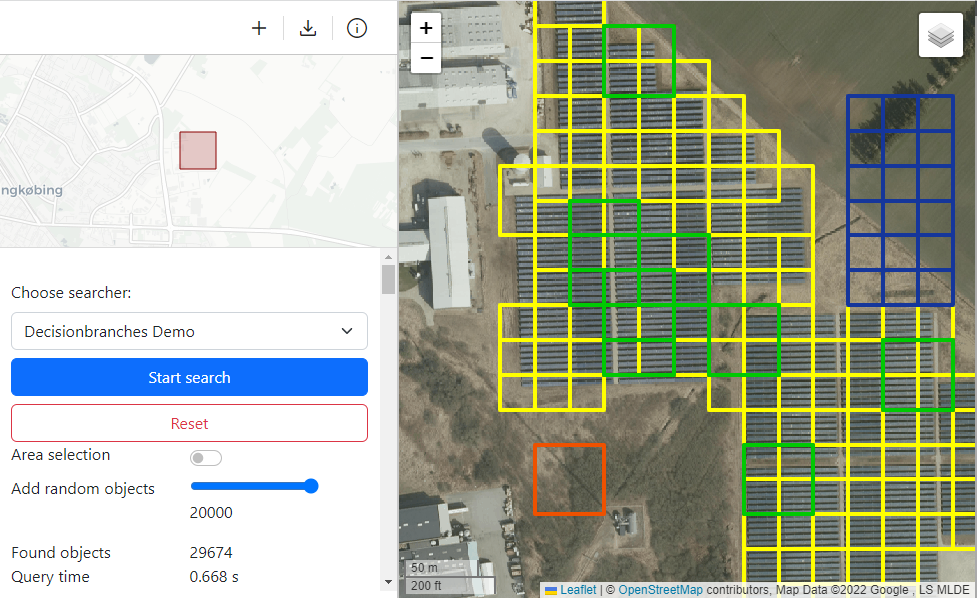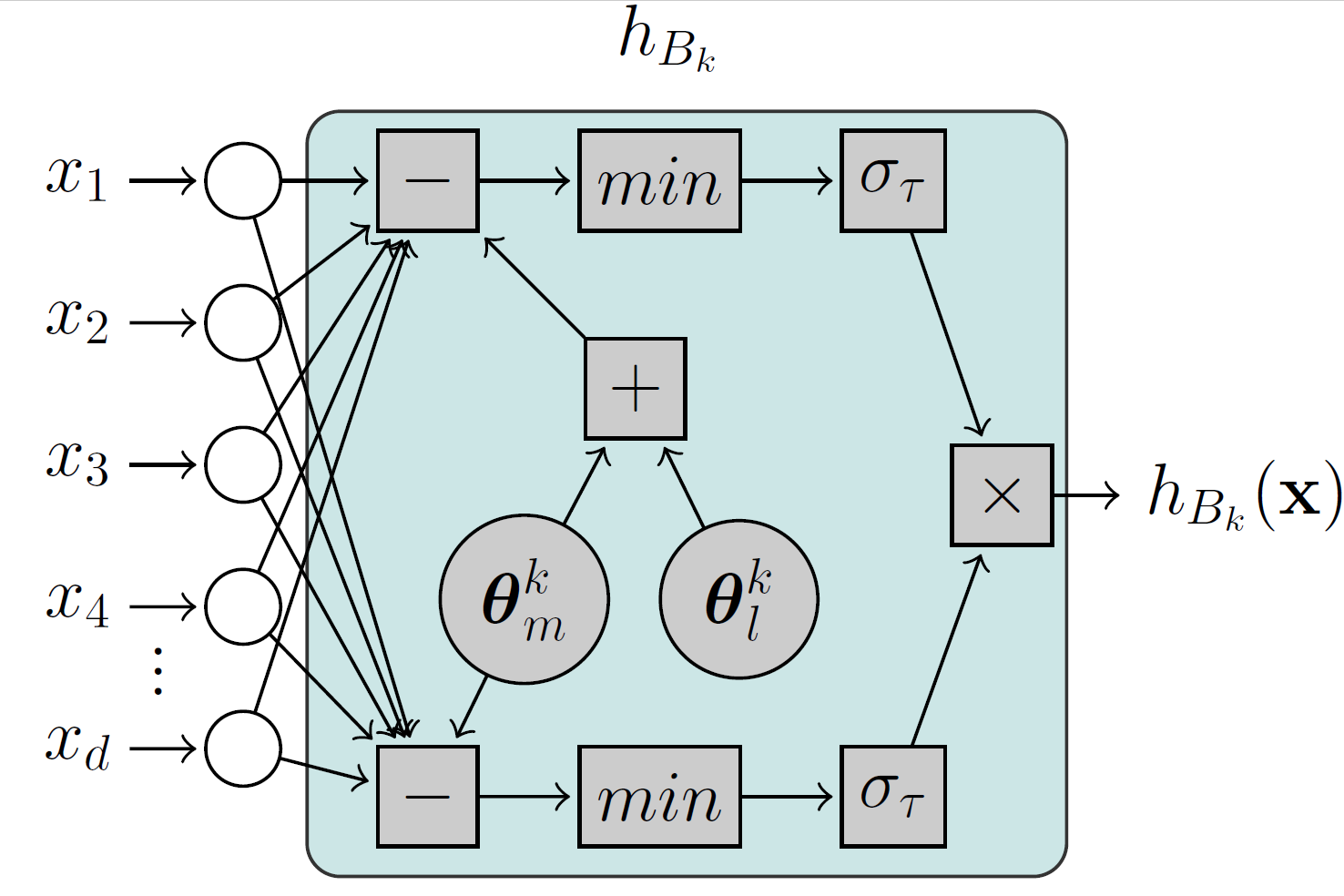publications
List of all my publications.
2024
-
 CLIP-Branches: Interactive Fine-Tuning for Text-Image RetrievalChristian Lülf, Denis Mayr Lima Martins, Marcos Antonio Vaz Salles, Yongluan Zhou, and Fabian GiesekeIn Proceedings of the 47th International ACM SIGIR Conference on Research and Development in Information Retrieval (Demo track), SIGIR (CORE Rank A*) , 2024Accepted (In press)
CLIP-Branches: Interactive Fine-Tuning for Text-Image RetrievalChristian Lülf, Denis Mayr Lima Martins, Marcos Antonio Vaz Salles, Yongluan Zhou, and Fabian GiesekeIn Proceedings of the 47th International ACM SIGIR Conference on Research and Development in Information Retrieval (Demo track), SIGIR (CORE Rank A*) , 2024Accepted (In press)The advent of text-image models, most notably CLIP, has significantly transformed the landscape of information retrieval. These models enable the fusion of various modalities, such as text and images. One significant outcome of CLIP is its capability to allow users to search for images using text as a query, as well as vice versa. This is achieved via a joint embedding of images and text data that can, for instance, be used to search for similar items. Despite efficient query processing techniques such as approximate nearest neighbor search, the results may lack precision and completeness. We introduce CLIP-Branches, a novel text-image search engine built upon the CLIP architecture. Our approach enhances traditional text-image search engines by incorporating an interactive fine-tuning phase, which allows the user to further concretize the search query by iteratively defining positive and negative examples. Our framework involves training a classification model given the additional user feedback and essentially outputs all positively classified instances of the entire data catalog. By building upon recent techniques, this inference phase, however, is not implemented by scanning the entire data catalog, but by employing efficient index structures pre-built for the data. Our results show that the fine-tuned results can improve the initial search outputs in terms of relevance and accuracy while maintaining swift response times.
@inproceedings{sigir, author = {L\"{u}lf, Christian and Martins, Denis Mayr Lima and Salles, Marcos Antonio Vaz and Zhou, Yongluan and Gieseke, Fabian}, title = {{CLIP-Branches}: Interactive Fine-Tuning for Text-Image Retrieval}, year = {2024}, booktitle = {Proceedings of the 47th International {ACM} {SIGIR} Conference on Research and Development in Information Retrieval (Demo track), {SIGIR}}, note = {Accepted (In press)}, } -
 Training Neural Networks End-to-End for Hyperbox-Based ClassificationDenis Mayr Lima Martins, Christian Lülf, and Fabian GiesekeNeurocomputing, 2024
Training Neural Networks End-to-End for Hyperbox-Based ClassificationDenis Mayr Lima Martins, Christian Lülf, and Fabian GiesekeNeurocomputing, 2024Modern decision-making requires the use of powerful algorithms to make sense of a variety of data. In this context, hyperbox induction has been seen as a promising technique in which decisions on the data are represented as a series of orthogonal, multidimensional boxes (i.e., hyperboxes) that are often interpretable and human-readable. However, existing hyperbox induction methods are no longer capable of efficiently handling the increasing volumes of data many application domains are confronted with. Moreover, current methods offer little to no control on specific properties of the induced box models, such as the number or the sizes of the hyperboxes. In this work, we propose a novel, fully differentiable framework for hyperbox induction that makes use of recent advancement in neural networks. In contrast to existing approaches, our hyperbox-based models can be trained in an end-to-end fashion, which leads to significantly reduced training times and superior classification results.
@article{neurocom, author = {Martins, Denis Mayr Lima and Lülf, Christian and Gieseke, Fabian}, title = {Training Neural Networks End-to-End for Hyperbox-Based Classification}, journal = {Neurocomputing}, pages = {127961}, year = {2024}, }
2023
-
 Fast Search-by-Classification for Large-Scale Databases Using Index-Aware Decision Trees and Random ForestsChristian Lülf, Denis Mayr Lima Martins, Marcos Antonio Vaz Salles, Yongluan Zhou, and Fabian GiesekeIn Proceedings of the VLDB Endowment (CORE Rank A*) , 2023
Fast Search-by-Classification for Large-Scale Databases Using Index-Aware Decision Trees and Random ForestsChristian Lülf, Denis Mayr Lima Martins, Marcos Antonio Vaz Salles, Yongluan Zhou, and Fabian GiesekeIn Proceedings of the VLDB Endowment (CORE Rank A*) , 2023The vast amounts of data collected in various domains pose great challenges to modern data exploration and analysis. To find "interesting" objects in large databases, users typically define a query using positive and negative example objects and train a classification model to identify the objects of interest in the entire data catalog. However, this approach requires a scan of all the data to apply the classification model to each instance in the data catalog, making this method prohibitively expensive to be employed in large-scale databases serving many users and queries interactively. In this work, we propose a novel framework for such search-by-classification scenarios that allows users to interactively search for target objects by specifying queries through a small set of positive and negative examples. Unlike previous approaches, our framework can rapidly answer such queries at low cost without scanning the entire database. Our framework is based on an index-aware construction scheme for decision trees and random forests that transforms the inference phase of these classification models into a set of range queries, which in turn can be efficiently executed by leveraging multidimensional indexing structures. Our experiments show that queries over large data catalogs with hundreds of millions of objects can be processed in a few seconds using a single server, compared to hours needed by classical scanning-based approaches.
@inproceedings{vldb, author = {L\"{u}lf, Christian and Martins, Denis Mayr Lima and Salles, Marcos Antonio Vaz and Zhou, Yongluan and Gieseke, Fabian}, title = {Fast Search-by-Classification for Large-Scale Databases Using Index-Aware Decision Trees and Random Forests}, year = {2023}, booktitle = {Proceedings of the VLDB Endowment}, pages = {2845--2857}, } -
 Rapid-Earth: A Search-by-Classification Engine for Large-Scale Geospatial ImageryChristian Lülf, Denis Mayr Lima Martins, Marcos Antonio Vaz Salles, Yongluan Zhou, and Fabian GiesekeIn Proceedings of the 31st ACM International Conference on Advances in Geographic Information Systems, SIGSPATIAL (CORE Rank A) , 2023
Rapid-Earth: A Search-by-Classification Engine for Large-Scale Geospatial ImageryChristian Lülf, Denis Mayr Lima Martins, Marcos Antonio Vaz Salles, Yongluan Zhou, and Fabian GiesekeIn Proceedings of the 31st ACM International Conference on Advances in Geographic Information Systems, SIGSPATIAL (CORE Rank A) , 2023This work was awarded with the Best Demo Award at the SIGSPATIAL conference 2023.
Data exploration and analysis in various domains often necessitate the search for specific objects in massive databases. A common search strategy, often known as search-by-classification, resorts to training machine learning models on small sets of positive and negative samples and to performing inference on the entire database to discover additional objects of interest. While such an approach often yields very good results in terms of classification performance, the entire database usually needs to be scanned, a process that can easily take several hours even for medium-sized data catalogs. In this work, we present RapidEarth, a geospatial search-by-classification engine that allows analysts to rapidly search for interesting objects in very large data collections of satellite imagery in a matter of seconds, without the need to scan the entire data catalog. RapidEarth embodies a co-design of multidimensional indexing structures and decision branches, a recently proposed variant of classical decision trees. These decision branches allow RapidEarth to transform the inference phase into a set of range queries, which can be efficiently processed by leveraging the aforementioned multidimensional indexing structures. The main contribution of this work is a geospatial search engine that implements these technical findings.
@inproceedings{sigspatial, author = {L\"{u}lf, Christian and Martins, Denis Mayr Lima and Salles, Marcos Antonio Vaz and Zhou, Yongluan and Gieseke, Fabian}, title = {{Rapid-Earth}: A Search-by-Classification Engine for Large-Scale Geospatial Imagery}, year = {2023}, booktitle = {Proceedings of the 31st ACM International Conference on Advances in Geographic Information Systems, {SIGSPATIAL}}, articleno = {58}, numpages = {4}, } -
 End-to-End Neural Network Training for Hyperbox-Based ClassificationDenis Mayr Lima Martins, Christian Lülf, and Fabian GiesekeIn 31st European Symposium on Artificial Neural Networks, Computational Intelligence and Machine Learning, ESANN (CORE Rank B) , 2023
End-to-End Neural Network Training for Hyperbox-Based ClassificationDenis Mayr Lima Martins, Christian Lülf, and Fabian GiesekeIn 31st European Symposium on Artificial Neural Networks, Computational Intelligence and Machine Learning, ESANN (CORE Rank B) , 2023Hyperbox-based classification has been seen as a promising technique in which decisions on the data are represented as a series of orthogonal, multidimensional boxes (i.e., hyperboxes) that are often interpretable and human-readable. However, existing methods are no longer capable of efficiently handling the increasing volume of data many application domains face nowadays. We address this gap by proposing a novel, fully differentiable framework for hyperbox-based classification via neural networks. In contrast to previous work, our hyperbox models can be efficiently trained in an end-to-end fashion, which leads to significantly reduced training times and superior classification results.
@inproceedings{esann, author = {Martins, Denis Mayr Lima and Lülf, Christian and Gieseke, Fabian}, title = {End-to-End Neural Network Training for Hyperbox-Based Classification}, booktitle = {31st European Symposium on Artificial Neural Networks, Computational Intelligence and Machine Learning, {ESANN}}, year = {2023}, }